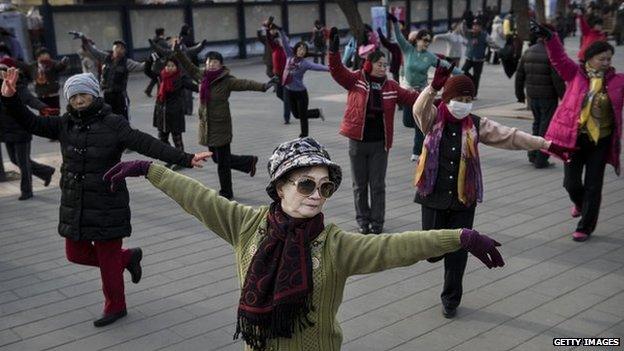China: 'Square dancers' face official choreography
- Published

China's square-dancers will be showing off state-approved moves from now on
People who gather to dance in China's public spaces will have to keep time with government regulations in future, it's reported.
"Public square dancing" is a popular pastime in China, particularly among older women known as damas. But they're considered a nuisance among some local residents, who complain about being disturbed by loud music. As a result, the authorities have stepped in to regulate and choreograph the dancing, the state-run China Daily website reports, external. Any groups wanting to get their groove on in public will now be limited to 12 government-approved routines, the report says. "Square-dancing represents the collective aspect of Chinese culture, but now it seems that the over-enthusiasm of participants has dealt it a harmful blow, with disputes over noise and venues," says Liu Guoyong from the General Administration of Sport, which is overseeing the regulation along with the culture ministry. "So, we have to guide it with national standards and regulations."
The choreography has been put together by an expert panel, the website says, and more than 600 instructors have been trained. "The unified drills will help keep the dancing on the right track where they can be performed in a socially responsible way," says Wang Guangcheng, a fitness trainer and member of the panel. Some details are still up in the air, including when and where people are allowed to dance, and exactly how loud the music can be. It's thought there are millions of square dancers across China, and they've even gone international - in 2014 groups were spotted dancing in front of the Louvre, external in Paris, and in Moscow's Red Square.
Use #NewsfromElsewhere to stay up-to-date with our reports via Twitter, external.